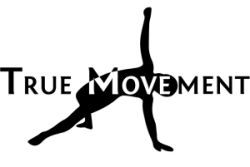Why Your Body is Not Like a Car
The argument goes something like this: “Your body is like a car. If parts of your car are out of alignment, it’s going to put uneven stress on the wheels and somewhere down the line your car is going break down. So too, if your body is out of alignment then your joints and muscles will be more stressed, which causes your body to break down and get hurt.” It’s a compelling story that I’ve heard hundreds of times from all sorts of well meaning therapists, trainers, and coaches, but in most cases it’s probably not true.
People With “Crooked Alignment”
Perhaps the closest human equivalent to an alignment problem in a car is a Leg Length Inequality (LLI). LLI describes the observation that a person has one leg longer (or shorter) than their other leg. If misalignments were all that they’re cracked up to be you might expect that untreated people with LLI would experience considerably more pain or injury than other people. However, research thus far has demonstrated that this is not the case.
In two different military studies, recruits with LLI were identified prior to service to be compared against their peers without LLI. After 1 year and 4 years respectively the data was crunched and the groups with LLI had no increase in pain, injuries, or any other medical infirmity when compared to their peers. These recruits were most likely to have been born with their LLI, which may have given their body adequate time to adjust to their asymmetrical bodies because it’s all they’ve ever known.
What happens if the LLI is acquired later in life?
People sometimes acquire leg length inequalities later in their lives through degenerative conditions, fractures, hip replacements, and amputations. In an extremely small number of these cases where dramatic differences exist between sides, correction of LLI may be necessary. However, even acquired LLI is very rarely problem. Looking at a pair of studies which examined those with LLI acquired from amputation above the knee and a degenerative condition respectively, there was no increase in the painful conditions when compared to the general population. It appears from these (and many other similar) studies that even in the event of serious trauma or degeneration, most people will still suffer no greater incidence of pain or injury from LLI.
In a published literature review, Knutson suggests it is likely LLI may sometimes contribute to pain or injury when large forces are imparted upon the body suddenly. However a separate review by Gurney warns, “The articles that find associations between LLI and pathological conditions must be interpreted with caution, as association does not prove a cause effect relationship, and may just represent a coincident finding.” At this point there are far too many cases where LLI is present without pain or injury to establish a clear causal relationship between LLI and pain or injury for the vast majority of people.
People Adapt
The really cool thing about people is that we are remarkably adaptable and resilient. When the body is subjected to stress, given the right conditions for recovery, the body gets better at responding to that stress. This is the foundation for the SAID principle, which underlies all effective exercise programs. Specific Adaptation to Imposed Demand (SAID) is why if you could lift 100lbs twice today, that given rest, recovery, and additional practice, you would be able to lift the same 100lbs three times or more in the near future. Barring some diseases and conditions, all people are able to improve this way. If people can develop the ability to lift large amounts of weight, run marathons etc, then why should having legs of different lengths be an insurmountable obstacle? The evidence suggests that LLI is often overcome.
Conclusion
I absolutely believe that there are better and worse ways to perform specific tasks, but for daily living there’s likely little reason to concern yourself with being perfectly symmetrical or aligned except for cultural expectations or desired aesthetics. Except in extreme instances, most with congenital or acquired LLI don’t experience any more problems than their peers despite the fact that their every step is asymmetrical. Knowing this, what are the chances that uneven shoulders, hips, or any other body parts are important? With so many pain and injury free people with “crooked alignment” it seems very unlikely that “poor alignment” is a cause for concern for most people. And if “poor alignment” doesn’t matter very much, then is that alignment really poor or just the natural variations we all have from being human?
References
Leg length inequality. A prospective study of young men during their military service.


